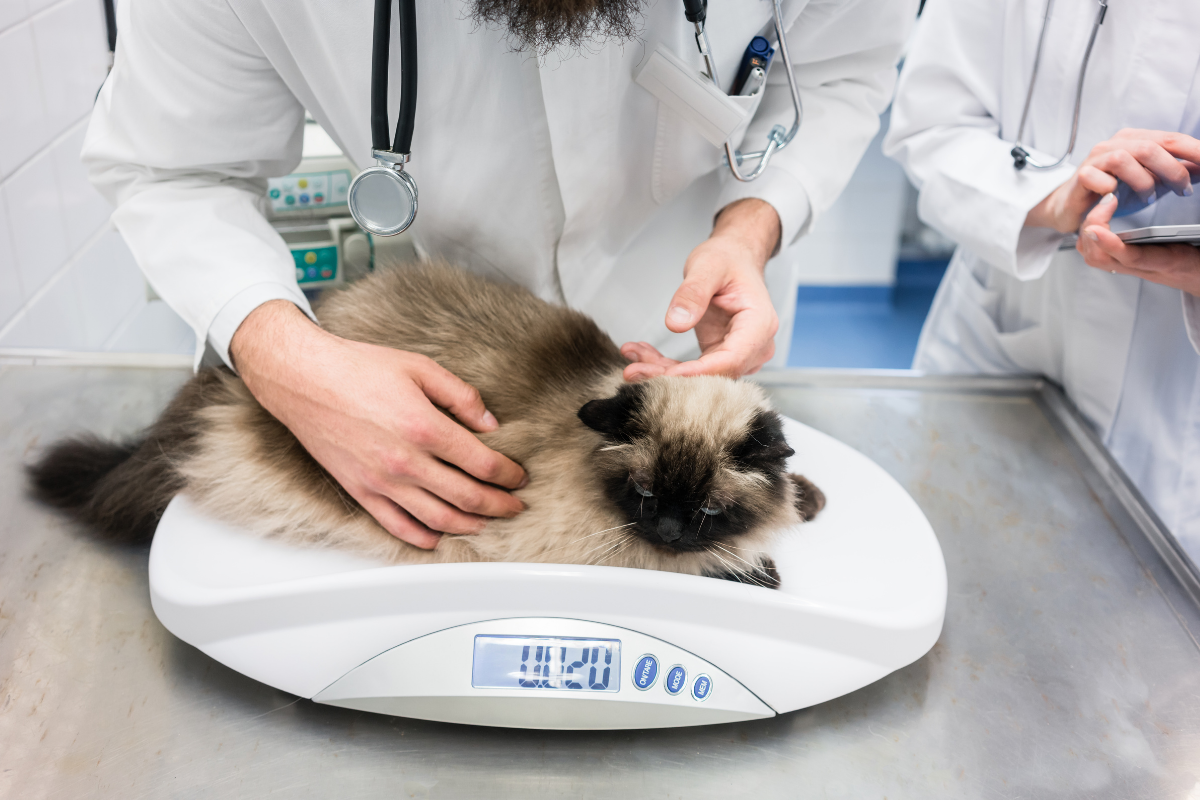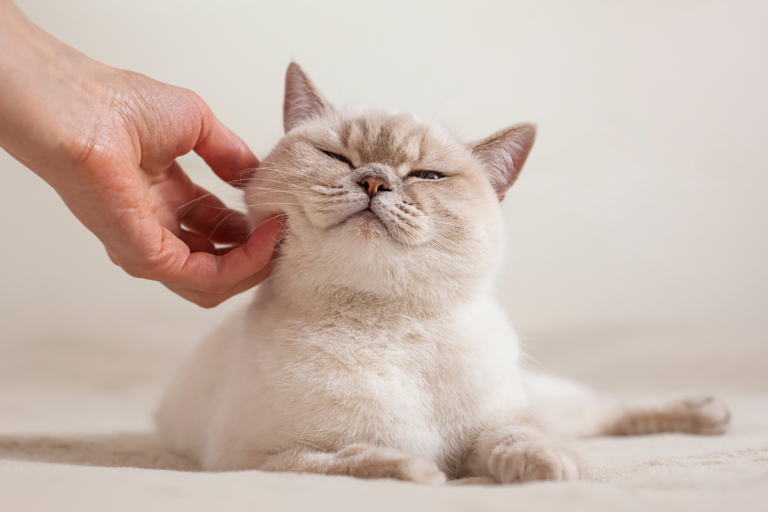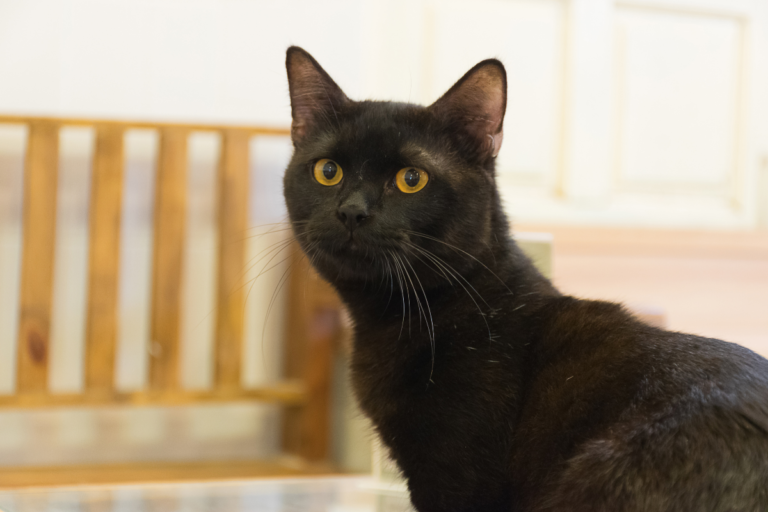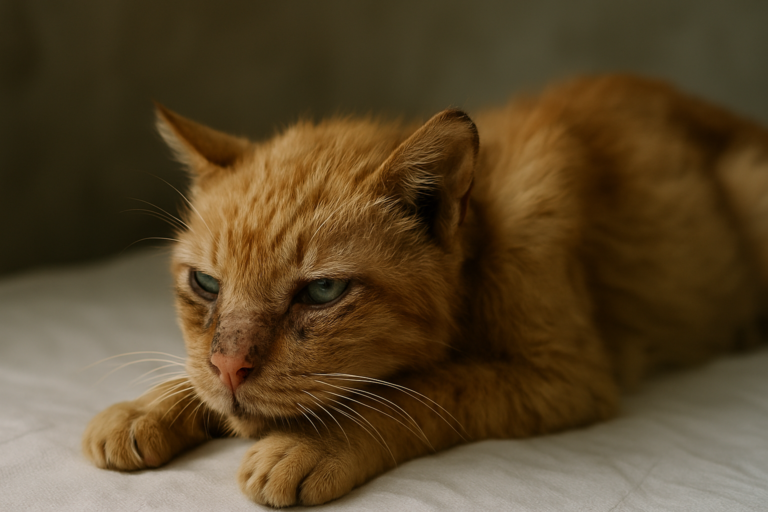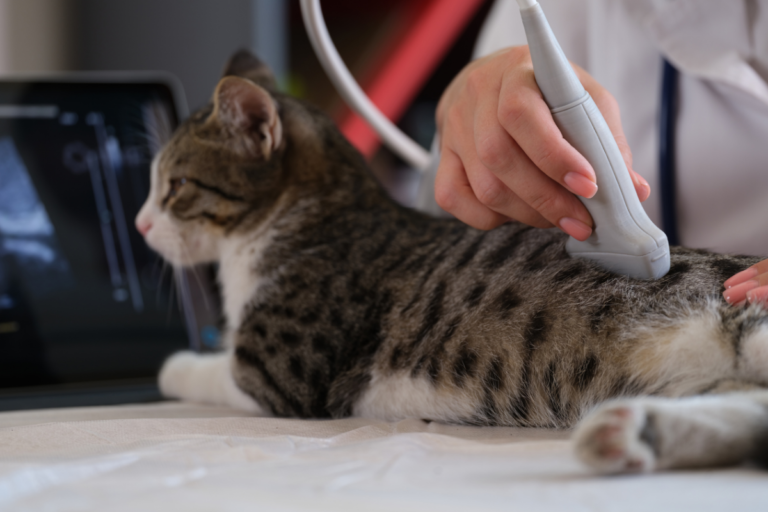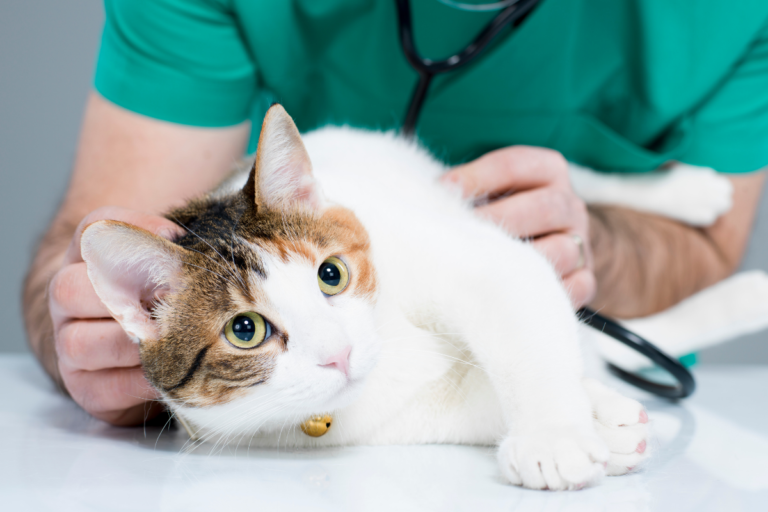The Power of Purr-fection: Managing Our Cats Healthy Weight
Keeping Our Cats Fit and Fine
Helping our furry buddies stay at a good weight really keeps them happy and healthy. Let’s dig into why keeping an eye on their weight and making sure they’re drinking enough water can work wonders for their health.
Why Weighing Our Cats Matters
Checking our cats’ weight now and then is like keeping tabs on their health status. Regular weigh-ins can catch those pesky weight changes and let us nip any issues in the bud. Cats, especially as they age, tend to pack on a few extra pounds, mainly because they’re not as hyper as they used to be.
Keeping track of their weight changes helps us decide if it’s time for a diet tweak or a bit more playtime. And it’s our older cats who need these check-ins the most since they can easily slide into chubby territory without us noticing.
| Age Range | How Often to Weigh-in |
|---|---|
| Kitten (0-1 year) | Every month |
| Middle-aged (1-7 years) | Once every three months |
| Senior (Over 7 years) | Monthly |
You might also want to check out some other stuff like cat illnesses and older cats dropping weight if you’re keen on more details.
Water: A Cat’s Best Friend
Keeping cats well-watered is really important for controlling their weight and keeping them in tip-top shape. Water keeps everything running smoothly inside – from digestion to absorption and all those crucial bodily functions that keep the kitty litter box in check.
Fresh water and moist, juicy cat food make hydration a breeze. This is super critical for those skinny cats that need to gain some healthy pounds.
To read more, peek over at our sections on kitty diabetes and portly kitties.
By keeping a regular check on their weight and making sure they’re sipping enough, we’re helping our cats stay spry and sprightly. For more tips on keeping cats healthy, click here.
Healthy Weight Guidelines
Ideal Weight Ranges
Keeping our cat buddies at a good weight is super important for their health. Most house cats should weigh between 8 and 12 pounds (3.6-5.4 kg). But, the perfect weight can change based on breed, age, and gender.
Here’s a handy list for some popular cat breeds:
| Breed | Ideal Weight Range (lbs) | Ideal Weight Range (kg) |
|---|---|---|
| Domestic Shorthair | 8 – 10 | 3.6 – 4.5 |
| Siamese | 5 – 10 | 2.3 – 4.5 |
| Maine Coon | 10 – 25 | 4.5 – 11.3 |
| Persian | 7 – 12 | 3.2 – 5.4 |
Want more info on different breeds? Check out our healthy cat weight kg page.
Factors Affecting Cat Weight
A bunch of things can change a cat’s weight, making each one’s ideal weight a bit different. Knowing these things can help us keep our furry pals healthy.
-
Age: Kittens and older cats usually weigh less than adults. For example, older cats might drop some pounds as they age.
-
Breed: Different breeds, different weights! Like, a Maine Coon can be healthy at 20 pounds, but a Siamese is comfy around 10 pounds.
-
Sex: Boys are often bigger and heavier than girls. A Siamese can weigh between 8 and 15 pounds, but it’s different for guys and gals.
-
Spayed/Neutered Status: Cats that have been spayed or neutered might gain weight if not monitored, because their energy level can drop.
-
Medical History: Conditions like diabetes or heart trouble can mess with weight. Always think about any health issues when checking a cat’s weight.
Knowing these things helps us whip up a plan to keep our cats feeling great. For more on spotting common cat sickness, check out our detailed guides.
Risks of Overweight Cats
Health Implications
Alright, cat lovers, let’s talk about keeping our whiskered pals fit and fab. It might seem harmless when your furry buddy looks like a little loaf of bread, but extra fluff actually comes with a lot of health baggage. Here’s the scoop on why a pudgy cat might be in the danger zone:
-
Heart Disease: Just like us, cats can blow a gasket if they’re carrying too much flab. That extra weight means extra work for their ticker, upping the chance of serious stuff like heart disease. Want the skinny? Dig into heart issues in cats.
-
Liver Disease: If a cat packs on the pounds, their liver might start storing too much fat, leading to a condition with a fancy name: hepatic lipidosis. It sounds scary ’cause it is. Your kitty’s liver is too important to mess with – get the lowdown at our cat liver problems page.
-
Bone and Joint Issues: More cat means more pressure on their bones and joints. They can end up creaky and achy, kinda like us humans with bad knees or backs. Think arthritis and a lot more couch potato time.
-
Diabetes: Being overweight is like a one-way ticket to Diabetestown. And trust us, managing diabetes isn’t a walk in the park. It’s for life! Get clued up on cat diabetic care.
-
Certain Cancers: Yep, even cats can get cancer, and their chubby cheeks could be partly to blame. Head over to Marina Village Vet to learn more.
Lifespan Impact
Weight is more than just a numbers game, folks; it hits them where it really hurts – their lifespan. Turns out, chubby cats don’t get to hang around as long as their lean buddies. On average, a heavyset kitty might only be with us for about five to ten years. In contrast, those svelte, healthy-weight cats can stick around for 12 to 15 years, enjoying more sunny naps and string chases (Pawlicy).
Even a couple of extra pounds can push your feline towards serious health troubles. So, those indulgent treats? Maybe save them for special occasions (VCA Hospitals).
| Weight Status | Lifespan Estimate |
|---|---|
| Healthy Weight | 12 – 15 years |
| Overweight/Obese | 5 – 10 years |
We all want our cats to stick around as long as possible, right? That means keeping them at their best weight is key. The better we understand the chub risk, the better equipped we are to steer our floofs towards healthier days. Curious about helping your cat shed some pounds? Swing by addressing weight concerns for some tips.
Also, take some time to glance at other wellness topics like cat teeth and cats dental disease. We’ve got plenty more purrfect advice for keeping tails up and purrs loud!
Addressing Weight Concerns
Keeping our beloved kitties in tip-top shape is a crucial part of their well-being. Let’s look at some friendly advice on helping our cats shed some weight and why chatting with a vet before starting any diet is a smart move.
Weight Loss Strategies
Helping our cats get a bit slimmer takes a bit of planning. We’ll need to consider some changes in their grub, a bit of playtime, and keep a close eye on any changes. The key is to go slow and steady—no need for crash diets here.
Caloric Intake Calculation
To start, we gotta figure out how many calories our feline buddy needs to cut down. This depends on each cat, and adjustments might be needed as they lose weight (VCA Hospitals).
| Cat Weight (lbs) | Daily Caloric Intake for Weight Loss |
|---|---|
| 8 | 180 – 200 |
| 10 | 200 – 220 |
| 12 | 220 – 240 |
| 15 | 250 – 275 |
Special Diets
Your vet might have some special food up their sleeve to help out. These gourmet options are often designed to keep calories low while maybe even giving the metabolism a little nudge (VCA Hospitals). Treats aren’t off the table, just keep ’em to 10% of their daily munchies.
Avoiding Starvation
No kitty crash diets here, as going without food can lead to liver problems (WebMD). Make sure meals are balanced so they’re still getting all the good stuff they need.
Veterinary Guidance
Before we whip up a meal plan, it’s best to call in the vets. They’ll check that nothing else is going on and give us the right advice to get our cats on the right track.
Regular Monitoring
Keeping tabs on things is crucial. Weigh them regularly and have your vet check in to make any tweaks. This way, we can safely make sure our cats are dropping pounds the right way.
Choosing the Right Food
Vets often recommend special diet foods that may boost metabolism and help our furry pals shed pounds effectively (VCA Hospitals).
A vet onboard will help us craft a safe plan for healthy cat weight loss. Stay cautious of any crazy fast weight changes—they could spell trouble without the vet’s guidance.
Want more on kitty wellness? Take a peek at our articles on what’s up with cats worms symptoms, spotting feline kidney disease symptoms, and figuring out cat gum disease.
Monitoring Cat Body Condition
Keeping tabs on our cats’ body condition is key to helping them live their best, healthiest lives. By checking in on their shape and size regularly, we’re making sure they’re in tip-top condition.
Body Conditioning System
Ever heard of the Body Conditioning System, or BCS for short? Our vet friends use this nifty nine-step guide to go beyond just weighing your kitty or comparing it to breed norms. The BCS tells us if our whiskered pals are too skinny, just right, or need to cut back on the treats.
| BCS Score | Body Condition | Characteristics |
|---|---|---|
| 1-3 | Underweight | Look out for visible ribs and spine |
| 4-5 | Ideal | Ribs are there but you gotta feel for ’em, there’s a waist, too |
| 6-9 | Overweight/Obese | Ribs are hiding, no waist in sight |
The BCS is like a cheat sheet for knowing what’s going on with our cats’ bods—it’s more than just numbers on a scale (Purina).
Visual and Physical Evaluation
But hold up, BCS isn’t the only thing to lean on. We should also trust our eyes and hands when checking out how our cats are doing, taking into account their breed, playful antics, and how their body checks out.
Visual Evaluation:
- Profile View: Our feline pals, in good shape, rock that belly tuck. If the tummy’s sagging or the waist’s gone missing, time to step in.
- Top View: See a waist behind the ribs? Cool! No waist? Might wanna rethink the kitty diet.
Physical Evaluation:
- Ribs and Spine: Healthy cats let you feel their ribs and spine, but they shouldn’t be sticking out. If they’re obvious, kitty may need more chow (Feline Fancy).
- Abdominal Fat: Give that belly a gentle poke. Too much fat or none at all could mean your cat’s off their weight game.
Regular weigh-ins are a vet-recommended move—try every month or so to catch any weight shifts early (Marina Village Vet). Older age, health hiccups, mood changes, or even the seasons can play a role in our furball’s weight (Feline Fancy).
So, to help our cats stay healthy, mix and match these checks with the right food, exercise, and regular vet visits. For more signs to watch out for, check out our page on cat illness. Looking for tips on a cat diabetic or dealing with an over weight cat? We’ve got guides just for you!
Promoting Healthy Weight
Keeping our kitty pals at a healthy weight can be as easy as tweaking their chow and ramping up their fun time. Who says cats can’t hit the gym?
Diet Adjustments
To keep our cats in shape (not round), we gotta think about what goes into their bowl. A couch potato kitty often munches a bit too much on the wrong stuff or skips workouts. Well, let’s tune into some feeding tweaks.
- Fixed Meal Times: Setting meal times is like having a dinner bell for your cat. Helps them portion their bites instead of turning meals into an all-day buffet. Cat food restaurants are best open for limited hours: twice or thrice daily is good.
- Special Diets: Got a chubby furball on your hands? Consider a canned diet or vet-prescribed foods that pack more muscle-building goodies per bite.
- Treats, but Not Too Many: Treats are the sprinkles on our cat’s food life! Still, they should make up just 10% of their day’s calorie pie.
| Diet Options | Details |
|---|---|
| Fixed Meal Times | Keeps the kitty from snacking aimlessly |
| Special Diets | Less calories, more nutrition per serving |
| Treats | Fun snacks, not meal supplements |
Exercise and Play Opportunities
Getting our cats moving is like hitting play on their health playlist. More zoomies mean fewer chunky bellies. Plus, playtime is an antidote to cat boredom—plus, it’s way more fun than kitty treadmill.
- Interactive Toys: Who knew eating could be a game? Puzzle feeders and interactive toys turn ’em into brainy and brawny beings. They challenge our sneaky snackers to work for their food, keeping them far from binge-eating habits.
- Play Sessions: Laser pointers, feather teasers, and wiggly mice? Yes, please! Carve out playtime slots for these critters to chase pretend prey and keep those paws moving.
- Climbing Gear: Cat posts, trees, and scratching stations—consider them a feline fun park. Spice things up so they can climb their way to fitness.
Apart from fun and food, giving them a periodic body check with the Body Conditioning System will keep them on track weight-wise. For more kitty health tips, you can snoop through our pieces on healthy cat weight kg and cat diabetic.
